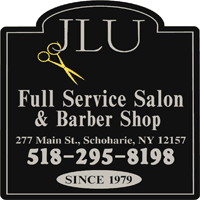Subscriptions
Menu
Advertisements
Strategy pays off for FAM, investors
10/18/2017 |
By Jim Poole |
Times change and so do circumstances, but strategy remains the same for Fenimore Asset Management.
That was the message at FAM’s 31st annual shareholders’ meeting Tuesday at Cobleskill-Richmondville High School.
Based in Cobleskill but nationally known, Fenimore looks to invest in quality businesses the FAM team understands, ones with strong management and those with a steady cash flow. And Fenimore buys stock at a discount in those companies to gain a margin of safety for its investors.
That four-point strategy has paid off again, the several hundred investors learned at the high school.
Tom Putnam, Fenimore founder and chairman, touched on the afternoon’s theme––“Changing Times, Unchanging Principles”––when recalling the start of the FAM Value Fund, the first Fenimore fund, in 1987.
“In October, there was Black Monday, the stock market crashed,” Mr. Putnam said.
“It was a very challenging time, but we had confidence in our strategy.”
John Fox, chief investment officer, agreed that challenges were common over three decades: high and low mortgage rates, bull and bear Wall Street markets, tech and housing bubbles.
“Change has been a constant in the financial market,” Mr. Fox said.
But the FAM Value Fund has been a strong performer all through those changes, he added. The year-to-date growth is 9.92 percent, and $10,000 invested in 1987 has grown to $216,715 today.
That success came from Fenimore adhering to its principles, Mr. Fox said.
“We cannot predict the stock market, but we can analyze companies,” he said, adding that in addition to following its proven strategy, Fenimore meets in person with the management of companies it invests in.
Paul Hogan, co-manager of the FAM Equity-Income Fund, said he looks for companies with strong dividend growth over a five-year period.
The year-to-date growth in the fund is 8.11 percent, and $10,000 invested in 1996, at its inception, has grown to $62,460.
Over the past year, Mr. Hogan said, investments in technology and industries have been strong, but investments in retail, not so much.
“Anything on the consumer side has been rather weak,” Mr. Hogan said.
Investing in Foot Locker, he added, didn’t pan out, “and we got rid of it very quickly.
“Sometimes you learn more through your mistakes,” Mr. Hogan said.
Like Fenimore’s other two funds, the FAM Small Cap Fund has done well, showing one-year growth of 14.22 percent.
Only in existence a little less than six years, the Small Cap Fund shows a return of $20,175 on a $10,000 investment in 2012.
“We’re still looking at great companies with good management,” said Co-Manager Andrew Boord.
“We look at smaller companies, and the beauty in that is that few people are buying them, so there’s less competition.”
• • •
After reviewing the funds, Fenimore’s research team fielded questions from the audience:
•On whether the firm will open a fourth fund, Mr. Putnam said probably not. “We’re not going to open a new fund unless it’s valuable to you,” he said.
•Dollar General buys some goods not made in America. A questioner asked whether researchers considered that before investing in the company.
Drew Wilson said that “China was not part of our choice.” Instead, investors considered Dollar Generals as “mini Wal-Marts” with the potential for runaway growth, he said.
Also, Mr. Wilson said, Fenimore believes Dollar General offers shoppers price, convenience and selection, and therefore is “Amazon-proof.”
•About whether Fenimore has invested in alternative energy companies, the team said only slightly. Mr. Fox noted that alternative energy companies “may be new and exciting, but they’re not mature and generating a lot of cash.”
•About security to shareholders’ online accounts, Mr. Putnam said Fenimore is doing all it can, while Mr. Fox said all employees are trained in security.
•On investing in Hostess, which makes Twinkies, cupcakes and other goodies, Kevin Gioia said the company is under new, aggressive management and is coming out with unique products.









